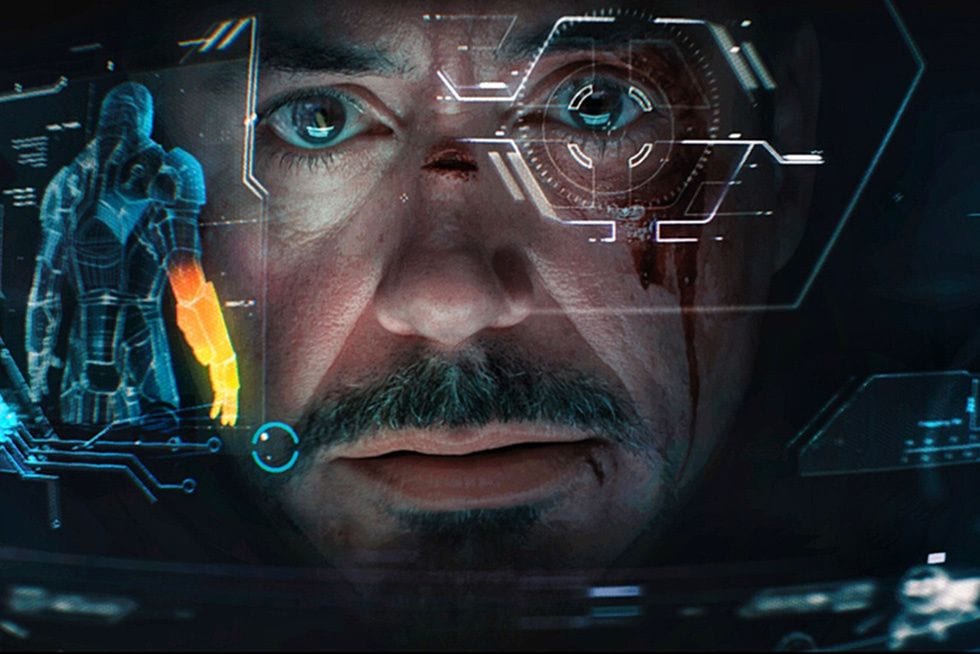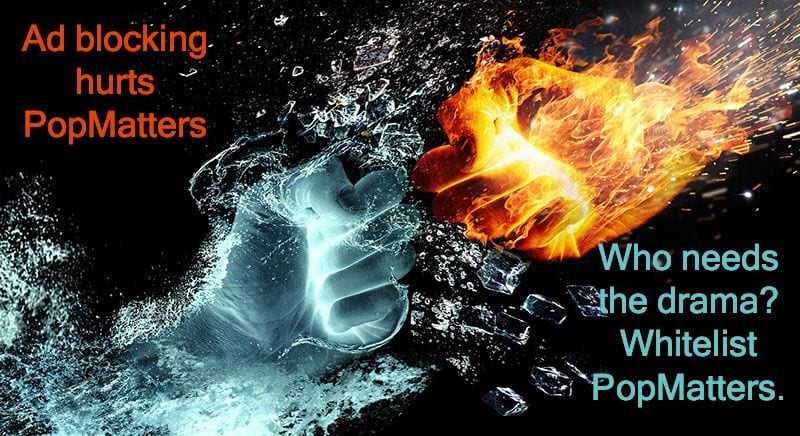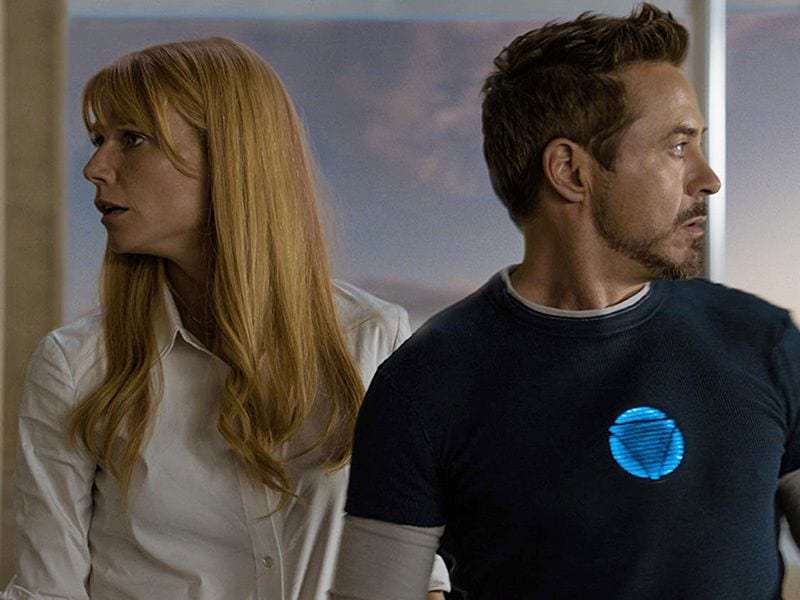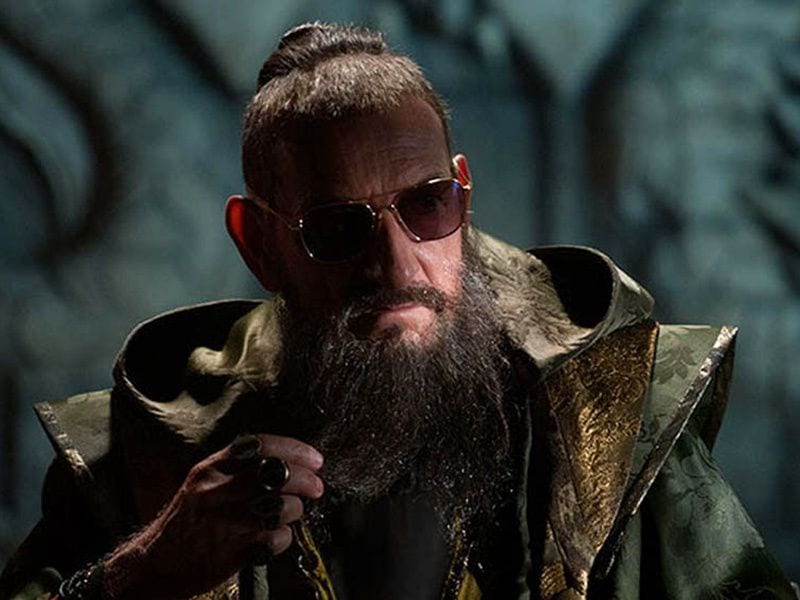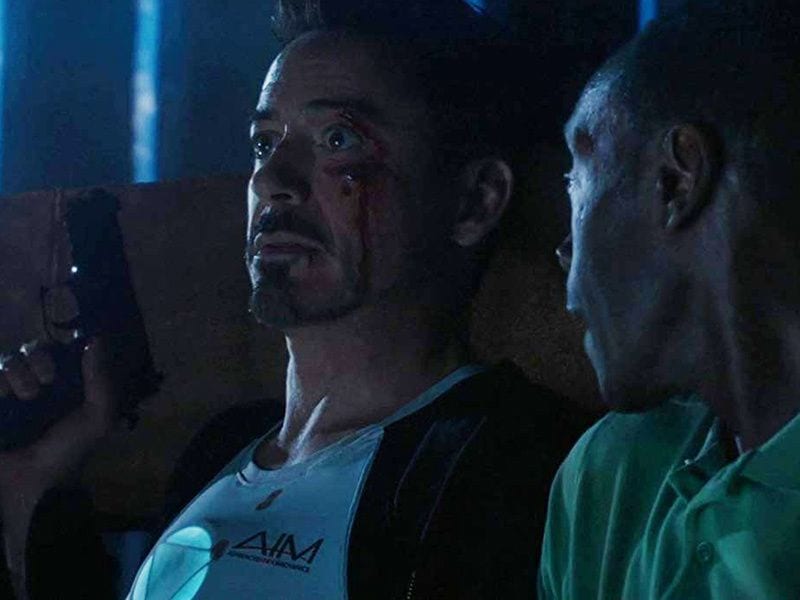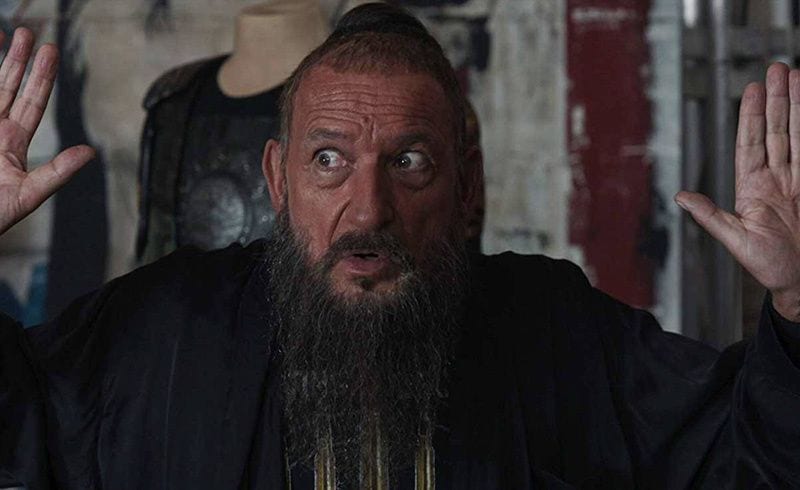One question loomed over Iron Man 3 (Shane Black, 2013) from its inception: Why doesn’t he just call the Avengers? After all, Tony Stark/Iron Man had just appeared in the biggest superhero film of all time, a team-up consisting of him, Captain America, the Hulk, Thor, and the combined resources of SHIELD (including Nick Fury, Black Widow and Hawkeye). How could the filmmakers devise a serious, dangerous scenario for the character in which he would not call his super-friends? Longtime comic book fans are used to the idea that characters will live their own lives, have their own adventures, and only interact with each other here and there. But film audiences were not generally accustomed to superhero team-ups, and they would have to be given a good reason for believing Iron Man would tackle his next big threat solo.
Beyond that, the filmmakers of Iron Man 3 were faced with the potential end of the Iron Man series. Maybe it was the original Star Wars films that set in stone the rule of trilogies, but the idea that a particular series reaches some kind of resolution after three films has been entrenched in blockbuster filmmaking for decades. Forgetting, of course, that Iron Man 3 is actually Iron Man’s fourth starring role, including The Avengers (Whedon, 2012), there was a feeling that this film would somehow bring the character’s story to an end. It would certainly bring Robert Downey Jr.’s contract to an end, resulting in new, costly negotiations for any future appearances. Oftentimes, that’s when a series calls for a reboot with a new cast, but that wasn’t going to happen in this interconnected web of film series known as the Marvel Cinematic Universe (MCU). These were all of the factors, some typical some brand new, facing the Marvel Studios producers as they launched what they called Phase Two of the MCU.
How did they address these issues? Largely by taking strong, surprising narrative risks. Rarely is the third film in a trilogy the best, but Iron Man 3 comes close. Taking a detour into The Avengers actually reinvigorated the character, giving the filmmakers new angles to explore in its wake. The most interesting of these angles was having Tony Stark struggle with post-traumatic stress disorder (PTSD) following the climactic event of The Avengers. Beyond that, Iron Man 3 is best remembered for its villain bait-and-switch. I will say up front that I’m totally all-in for this twist. A few quibbles aside, I think it’s brilliant, hilarious and, as I mentioned, memorable. These two elements, PTSD and the villain twist, represented the boldness of Marvel Studios as it built on the success of The Avengers. As Phase Two progressed, the studio would take real narrative risks with its properties and reap the rewards. This all began with Iron Man 3.
Iron Man 3 largely began with director and co-writer Shane Black. There were unconfirmed reports of dissatisfaction from director Jon Favreau on the set of Iron Man 2 (Favreau, 2010), and he confirmed in December 2010 that he would not be returning for the third film. Favreau’s relationship with Marvel Studios has remained close, however, evidenced by his supporting role in this film. In February 2011, Marvel announced that Black would write and direct Iron Man 3.
Black made his first splash in Hollywood when his script for Lethal Weapon (Donner, 1987) was purchased for $250k. Into the ’90s, Black remained an extremely high-paid screenwriter, writing The Last Boy Scout (Scott, 1991) and The Long Kiss Goodnight (Harlin, 1996), among other things. After a long hiatus, Black returned to films by writing and directing the brilliant and underappreciated Kiss Kiss Bang Bang (Black, 2005) starring Robert Downey Jr. Black and Downey remained close, with Black providing some uncredited writing for Iron Man (Favreau, 2008). This made him an ideal choice for Iron Man 3. Black’s films are known for several signature elements: complex crime plots, witty dialogue, bickering partners, heavy violence, California settings and, most famously, Christmas. All of these elements, except for the heavy violence, would find their way into Iron Man 3, making the film a big-budget, superhero-infused Shane Black film.
In March 2011, Black was paired with Drew Pearce to write the screenplay. Pearce had previously been working on a film adaptation of Marvel’s Runaways. The pair were inspired by Tom Clancy novels, with their technological, reality-based espionage threats. They sought to turn the film into a superhero technothriller. They were also inspired by the “Extremis” story from Iron Man Vol. 4 #1-6 (January 2005-April 2006), written by Warren Ellis and drawn by Adi Granov. This highly-influential story had already influenced Iron Man with its update of the character’s origin and Granov’s armour designs.
Iron Man 3 loosely drew from the rest of the story: Tony’s mind-controlled armour, the Extremis serum, and characters such as Aldrich Killian and Maya Hansen. As a nod to their inspiration, the writers named the character of the United States President after Ellis. They also sought to separate Tony from the Avengers by making his mission personal and stripping him of his technology. As the process continued, Black was given one piece of advice from Joss Whedon, writer/director of The Avengers. He said to trust Kevin Feige, the creative head of Marvel Studios, and the Marvel Studios machine. Black seemed to do that, bringing his unique voice and eye to the film while still working within the Marvel Studios framework. The result was distinctive, surprising, and hugely entertaining.
Iron Man 3 opens with a fumbling narration by Tony Stark (Robert Downey Jr.) that recalls the voiceover from Kiss Kiss Bang Bang. We’re reintroduced to Tony at a New Year’s party in Bern, Switzerland on December 31, 1999. He sidesteps Dr. Wu (Wang Xueqi) and Ho Yinsen (Shaun Toub), the man who would help him escape captivity in Iron Man, to seduce Dr. Maya Hansen (Rebecca Hall), a geneticist. They are approached in the elevator by a disabled scientist, Dr. Aldrich Killian (Guy Pearce), who is interested in Hansen’s research. Tony cruelly promises to meet Killian on the freezing roof, then accompanies Hansen to her room and forgets about Killian. He learns about Hansen’s research into Extremis, a treatment that could potentially cause rapid regeneration in organisms. It is unstable, however, causing the plants she has experimented on to burn hotly and explode when injured.
This opening efficiently sets up many key players in the film, as well as one of the themes: that we create our own demons. We see Tony in full jerk mode as he was early in Iron Man, drunk, dismissive, womanizing, intentionally mean-spirited. It reminds the audience how far Tony has come as a character across his three previous appearances. But despite his rehabilitation, he crossed a lot of people when he was a jerk, and those people can still come after him.
In the present, Tony has been churning out new armours since the end of The Avengers. In that film, he debuted his Mark 7 armour, and now he is testing out Mark 42 a few months later. I do not particularly like the colour-scheme, dominated by off-white, but the nifty Mark 42 armour is broken into pieces that can fly at Tony independently and assemble on his body at will. He’s freed from work concerns, thanks to Pepper Potts (Gwyneth Paltrow), his girlfriend and former assistant who’s now running Stark Enterprises full-time. Pepper has also moved in with Tony, giving their relationship a nice sense of progression that is not often seen in an action series. Tony is now in a completely committed relationship.
Most interesting of all, though, is Tony’s state of mind at the beginning of the film. He’s having trouble sleeping, and has nightmares when he does. His obsessive building and and tinkering with his armours, and fixation on protecting Pepper, are meant to distract his mind. Whenever someone, typically a young fan, brings up the climactic Battle of New York from the end of The Avengers, when aliens invaded through a wormhole in space and Tony nearly died flying a nuclear missile through the wormhole, Tony has an anxiety attack. Tony Stark in Iron Man 3 is a superhero with post-traumatic stress disorder. He’s not a near-immortal Asgardian warrior, or a battle-hardened super-soldier, or a highly-trained super-spy like his Avengers colleagues. He is a regular, albeit brilliant and rich, human being. When faced with the cataclysmic events and his near death months earlier, it left him disturbed and mentally shaken. Tony is also a character who loves to be in control, and those events were supremely out of his control.
This is a brilliant use of the shared universe of the MCU to push the character forward. In Iron Man and Iron Man 2, Tony faced villains that were clearly within his wheelhouse, evil businessmen and engineers in derivative suits of armour. In The Avengers, he was up against Loki and an alien army. That would have an effect on a person’s psyche. Also, The Avengers pushed Tony’s development as a hero by forcing him to operate within a team and encouraging him to be more selfless. Iron Man 3, in turn, pushes his development further by having him face the consequences of being that kind of hero. It also sets Tony off on a quest to regain control of his world, which informs his actions in Avengers: Age of Ultron (Whedon, 2015), Captain America: Civil War (the Russo Brothers, 2016) and Avengers: Infinity War (the Russo Brothers, 2018). Tony’s evolution across his appearances in the MCU has been incredibly interesting and nuanced, and Iron Man 3 represents the most intriguing development. Finally, it’s worth noting the positive aspect of such a large-scale film highlighting PTSD, a widespread, often-misunderstood condition. For more on that, I will direct you to Andrea Letamendi’s Under the Mask blog post from shortly after the release of the film.
Meanwhile, the United States is under attack from the Mandarin (Ben Kingsley), who has been orchestrating strange bombings throughout the country and at military bases abroad. The Mandarin takes credit for the attacks by hijacking news networks to release his videos. The videos are creepy and effective, with Kingsley delivering menacing sermons in a strange, Southern-tinged drone over shots of terrorist training camps and attacks. The United States government responds with Col. James “Rhodey” Rhodes (Don Cheadle), Tony’s friend and operator of the War Machine armour introduced in Iron Man 2. They rebrand him Iron Patriot, and paint his armour red, white and blue. The design is intentionally garish, based on a supervillain design from recent Avengers comics. The filmmakers viewed Iron Patriot as the government’s attempt at a response to the Avengers, a government-sanctioned hero as opposed to the Avengers’ free agents.
Killian re-emerges, handsome, suave, cured of his disability. He’s a living example of the Extremis procedure that has been perfected at his think-tank. Killian tries to sell Pepper on partnering with him on the project, but she worries it’s weaponizable and rejects the offer. During the meeting, Happy Hogan (Jon Favreau), head of Stark Enterprises security, grows suspicious and follows Killian’s bodyguard, Savin (James Badge Dale). Savin meets a contact in downtown Los Angeles, and gives him a dose of Extremis. The contact overdoses and explodes, severely injuring Happy. Savin, having also used Extremis, immediately heals himself and walks away. The Mandarin soon takes credit for the explosion, meaning he, Savin and Killian are in cahoots. This also makes it personal for Tony. Happy is one of his closest friends, and he uses the attack to publicly declare war on the Mandarin. Why doesn’t he call the Avengers? Because he wants to handle it himself.
Tony examines the crime-scene through some computerized tomfoolery, and gets a lead on a recent similar explosion, seemingly unrelated to the Mandarin, in Tennessee. He’s interrupted by the arrival of Maya Hansen, who claims to have important information. She’s unable to get a word in, however, through Tony and Pepper’s bickering. And then Tony’s house is attacked. Savin pilots one of three helicopters armed with missiles that destroy the cliffside home. Tony encases Pepper in his mind-controlled armour, allowing her to escape with Hansen. He then recalls it to fight back, but is overwhelmed. His lab and many of his armours are destroyed, and Tony covertly retreats. Most people assume he has died, another reason the Avengers don’t rush to his aid. Tony passes out, and his armour flies him to Tennessee before it runs out of power.
A common criticism of Iron Man 3 is how little time Tony spends in his suit. He rarely wears one and, when he does, it often malfunctions to comedic effect. This is a common superhero sequel trope, however. The hero is stripped of his or her (let’s be honest, usually his) powers, and must prove that he’s a hero even without them. I find it very entertaining to see Tony stripped of his workshop and fancy armours, forced to rely on his wits and lower-tech tinkering to fight back. He happens upon a young boy, Harley (Ty Simpkins), who seems to have the same tinkering spark as Tony. I love the Tony/Harley dynamic, since it subverts most of the tropes of the hero/plucky kid dynamic. Tony is constantly calloused or dismissive of Harley, showing no compassion for his sob story and never giving him any credit. At the same time, Harley seems very self-aware of the traditional dynamic in such a situation, and tries to milk it.
Tony discovers that the nearby explosion was connected to the Mandarin’s other attacks, and that in each case a person was carrying the bomb. He interviews the mother of the man who exploded, but they are interrupted by Savin and Brandt (Stephanie Szostak), another Extremis user. Tony fights them in a quick, inventive action scene, full of Black’s signature quips. He leaves his armour to recharge with Harley while he sets out to figure out who’s behind the Mandarin. Tony ultimately learns that Killian has recruited military veterans with missing limbs for his Extremis trials. He overdosed some of them at key moments, so that they wouldn’t resist the Mandarin’s bombs. Elsewhere, Hansen reveals to Pepper that her boss, Killian, is working with the Mandarin. She betrays Pepper, though, and Killian captures her. Rhodes has been looking for the Mandarin as well, but he walks into a trap and is captured as well, along with his armour.
Tony traces the Mandarin’s broadcasts to a compound in Miami, and breaks in with some weapons improvised from a hardware store. But inside the compound is not what Tony, or the audience, expects. There are armed henchmen, but also women in glittery bikinis, drugs, alcohol, and ping-pong tables. The Mandarin is in the bathroom, and emerges yammering jovially in a northwestern English accent to the two ladies in his bed. You see, the Mandarin is not actually real. He was created by Killian’s think-tank as a bogeyman for the world to fear, taking credit for Killian’s misdeeds. They created an amalgamation of terrorist tropes, called them the Mandarin, and hired a good-tempered, drug-addicted, down-on-his-luck English actor, Trevor Slattery, to portray him in the videos. What a twist. What. A. Twist. I absolutely adore it, but it was controversial among certain comics fans. Let’s discuss why they are wrong.
The Mandarin was introduced in Tales of Suspense #50 (February 1965), and he’s every bit the racist, fu-manchu villain stereotype that you could imagine. He represented American fears and misunderstandings of east Asian cultures and their rising power at the time. The Mandarin is a scientific genius, on par with Tony, but also possesses ten mystical power rings to give him an edge. In his comics, Iron Man doesn’t have a particularly strong group of villains, and doesn’t even have a primary antagonist like Batman (the Joker), Spider-Man (Green Goblin), Superman (Lex Luthor), the Fantastic Four (Dr. Doom), the X-Men (Magneto), Captain America (the Red Skull), Thor (Loki), etc. In a way, Iron Man’s biggest villain is himself, and his own self-destructive tendencies, something the films have adapted perfectly. The Mandarin is Iron Man’s most famous villain simply because, as Kevin Feige put it, he has been around the longest. There are no classic, definitive Mandarin stories in the Iron Man back catalogue. So, to the fans who were waiting for a climactic battle between Iron Man and the Mandarin, I would ask: why?
Shane Black was never going to do a direct adaptation of the Mandarin, who he considered a racist stereotype. Instead, co-writer Drew Pearce hit on the idea of the Mandarin being a fake, a front. They questioned why anyone would ever openly announce that they are an international terrorist, putting a target on their back. A smart person, such as the Killian character, would create a fake demon for people to fear. I’ll admit that the big reveal diminishes the true villain of the film, somewhat. Kingsley’s portrayal of the Mandarin in the threatening videos is uniquely menacing. Behind him is the true villain, Killian, another smart, white guy for Tony to battle. MCU films were often criticized at this point for their “villain problem”, since their villains were often uninteresting or forgettable. Killian, unfortunately, fits this trend. But I argue that MCU films are about the heroes, not the villains, and the heroes are well-presented. Also, while Killian may be underwhelming, Trevor Slattery is phenomenal.
The screenwriters and Ben Kingsley swing for the fences, comedically, in Trevor’s scenes, and it works so well. He happily tells Tony everything he can about Killian’s plans, then later denies it to Killian’s men. He swills cans of beer, nods off during explanations, gets distracted by a football match, and is generally just delightful. I feel such glee watching his scenes. Iron Man 3 is funny, constantly undercutting serious or heroic moments with comedy but, nonetheless, Black establishes serious life-or-death stakes. And dropped into the middle of it is an over-the-top comedic character. This idea easily could have failed, and some critics think it did, but I adore it.
As I said, Black is constantly undermining the seriousness with comedy. While testing his Mark 42 armour, Tony strikes a heroic pose in his lab, then he’s knocked over by another piece of the suit. He’s captured after talking to Trevor, and plans on his armour arriving at just the right moment to save him. It doesn’t, much to the amusement of the henchmen guarding him. He’s forced to escape with one glove and one boot when they arrive, in a frenzied scene of Tony off-balance, taking out henchmen. When he gets down to the final henchmen, the man drops his gun saying “honestly, I hate working here, they are so weird” and runs off.
Tony meets up with Rhodey at the compound, but Killian took the Iron Patriot armour. He sends Savin in the armour to Air Force One to retrieve the President (William Sadler). Killian’s master plan is to publicly kill the President and blame it on the Mandarin. The Vice-President (Miguel Ferrer) will then become President, but under Killian’s control. Meanwhile, Killian has also injected Pepper with Extremis, putting her in danger.
Tony acquires his full armour and flies up to Air Force One, but Savin has already sent the President away in the Iron Patriot. Tony kills Savin, but not before an explosion sends 16 passengers flying out of the plane into the sky over Miami. What follows is a masterful, thrilling action sequence. The filmmakers toyed with shooting everything with wires and green-screen, but instead hired the Red Bull skydiving team to perform around 50 jumps to get the footage. Tony flies towards the passengers, encouraging them to grab each other in a chain as he electrifies their arms to hold their grips. As he does so, Air Force One explodes and disintegrates in the background and Miami continuously rushes up to meet them. This is intense, old-fashioned superheroics, and the sequence gets my heart racing every time. Finally, in keeping with the tone of the rest of the film, the armour sails away triumphantly from the rescued passengers, only to turn and be hit by a truck going over a bridge, scattering the pieces. Tony was not in the armour, but piloting it remotely. It’s a funny tag on an exciting scene.
Tony and Rhodey track the President to a docked oil tanker, and they sneak aboard. This is the section that feels the most like Shane Black. Tony and Rhodey bicker like buddy cops, Tony is hilariously inept at scouting and shooting next to Rhodes’ military training, and the oil tanker recalls the climax of Lethal Weapon 2 (Donner, 1989). To combat Killian’s Extremis-enhanced soldiers, Tony calls in the “house party protocol”. All of his surviving armours, a few dozen, descend on the tanker for battle. As Rhodey goes for the President, Tony jumps in and out of armours to find Killian and Pepper. This sequence is a real treat for fans of the Iron Man comics, as many of the designs are based on classic armours through the decades. In the wake of the success of The Avengers, Marvel Studios reportedly increased the budget of Iron Man 3 from $140 million to $200 million, with much of the added budget going into broadening the scope of this final battle. I’m skeptical of this story, since the budget of Iron Man 2 was $200 million. Why would the studio initially make the budget of #3 so low? Regardless, the money is on the screen. Iron Man 3 was nominated for Best Visual Effects at the Academy Awards, losing to Gravity (Cuarón, 2013), and this sequence is the effects showcase.
Tony finds Pepper, but Killian attacks him and Pepper falls into a fire below. Tony goes after Killian, who rages with fiery Extremis powers. At one point he tears away his shirt, revealing two dragon tattoos across his chest, stating that he’s the true Mandarin. Tony encases him in the Mark 42 armour, then has it explode. This doesn’t kill Killian, however, and he tries to attack Tony once more. He’s stopped by Pepper, who survived the fall because of the Extremis in her body and violently kills Killian for good. With the threat over, Tony apologizes for his behaviour. He promises to be less distracted and, as a token and Christmas present to Pepper, he makes all of his armours self-destruct.
Feige described one aspect of the film as a love triangle between Tony, Pepper, and the Iron Man suits. This idea ends up feeling a little undercooked, but the scene works, nonetheless. A tidy denouement wraps up all of the loose threads. Tony cures the Extremis in Pepper. Trevor and the Vice-President are arrested. Harley arrives home to find Tony has beefed up his workshop. Tony even hires Dr. Wu, briefly glimpsed in the film’s opening, to finally remove the shrapnel that has been in his chest since the beginning of Iron Man. He settles down with Pepper, and throws his chest reactor into the ocean at the site of his former house. Tony drives away with a few robots recovered from the wreckage, implying that he’s not finished building. But, echoing the end of the first film, Tony declares in narration “I am Iron Man.” The screenwriters originally intended to end the film with “I am Tony Stark,” driving home the point that he’s the hero, in or out of the suit. They changed it to add a mythic quality to the ending, that Iron Man is more than the suit.
The ending really does feel like the end of the series, and of Tony Stark, which feels odd in retrospect. I suppose the future was unknown at the time, but Tony Stark has returned to star in four MCU films to-date, with a fifth coming in a few months. There’s a feeling at the end of Iron Man 3 that he may not return. Even the splashy first few minutes of the end credits, featuring shots from all three Iron Man films, imply resolution. This section of credits is scored with a jazzy, ’60s-esque rendition of the film’s main theme by composer Brian Tyler entitled “Can You Dig It?”. Tyler does a great job throughout the film, finally giving Iron Man a memorable theme.
I’vebeen pretty effusive in my praise of Iron Man 3, and I do love the film. However, I need to point out the major flaw of the film, which is female representation. The commentary by Shane Black and Drew Pearce is full of comments about the unfortunate reduction of female roles. Hansen, for example, was originally the main villain of the film, not Killian, which is the case in the comics. She’s actually the first character to appear on-screen, indicating her importance in earlier drafts. Brandt, the female henchperson, was originally the main secondary villain, not Savin. In fact, rather than Killian, Brandt was originally the one who appeared at the very end and was dispatched by Pepper. The Pepper/Tony/armour love triangle doesN’T quite come through because Pepper is captured and sidelined for much of the film. The decision to diminish these roles didN’T lie with the filmmakers, however, which is where this story becomes more problematic.
The decision came from Disney executives, specifically those focused on merchandising. A directive came down that audiences may not accept a main female villain, and that they would have difficulty selling toys as a result. Much has come out about Disney’s treatment of Marvel female characters in the past few years. There was a significant backlash when toys from Avengers: Age of Ultron (Whedon, 2015) erased Black Widow from key scenes. An internal memo was reportedly released stating that Disney already had the female toy market cornered with its Disney Princess line, and that it bought Marvel Entertainment to tap into the male toy market. Ergo, Disney didn’t need “female” toys. There also has not yet been a Black Widow film, despite years of fan support for one. This is, of course, small-minded, short-sighted, idiotic. Can’t boys play with female action figures? Watch female superheroes or villains? Are there not a lot of girls who love Marvel more than Disney Princesses? In terms of Iron Man 3, Hansen would have been much more memorable than Killian following the Mandarin reveal. This directive weakened the film, ruined the filmmakers’ best intentions, and continued a trend of subpar female representation from which the MCU is only now emerging. But as a fan, you have to take the good with the bad. I can love Iron Man 3 and the MCU, and still criticize their female representation. Being a fan doesn’t need to be all or nothing.
Iron Man 3 was an enormous hit. It’s the highest-grossing Iron Man film, earning over $400 million in North America and over $1.2 billion worldwide. Domestically it was second only to The Hunger Games: Catching Fire (Lawrence, 2013) and worldwide it was second only to Frozen (Buck and Lee, 2013) in its year of release. Outside of North America, the film grossed more than the first two films combined. Some of this success can be attributed to The Avengers, which made over $1.5 billion one year earlier, and opened up global audiences to these characters. That film continued to pay dividends, helping sequels Iron Man 3, Thor: The Dark World (Taylor, 2013) and Captain America: The Winter Soldier (the Russo Brothers, 2014) all out-gross their predecessors.
Another reason for Iron Man 3‘s increased success was the way in which the filmmakers courted the Chinese market. At this point, China had become the fastest-growing movie market in the world. It’s now second only to the United States, and still growing. With more money to be had, Hollywood studios began to look for ways to appeal to China. The film was co-financed by DMG Entertainment, a production company with close ties to China that helped to increase its distribution in that country. The Chinese cut of the film is four minutes longer, featuring additional scenes with Dr. Wu, a character played by Chinese superstar Fan Bingbing, and heavy product placement of Chinese products. Most films of this era were not quite as overt in their courting of the Chinese film market, making this a very interesting case. Iron Man 3 was the highest-grossing film in China in 2013, earning $121 million.
The shadow of The Avengers loomed large in 2013, and Iron Man 3 doesn’t get its due. Worse than underappreciation, the film received a very odd retroactive backlash that I never understood. Fans seemed to love it upon release and then, six months to a year later, the internet was full of blogs calling it a terrible film. Now things seemed to have settled down, but it was a weird, and unfounded, backlash. The fan community is known for being fickle, often feeling the need to tear down an older film in an effort to prop up a new film, but the delayed negative reaction to Iron Man 3 gave me whiplash. I think it’s a terrific film, and an important one to the MCU. Iron Man made a certain level of humour fundamental to the MCU and The Avengers built upon this to make MCU films truly funny. Iron Man 3 introduced a particular brand of irreverent humour, undermining the serious or heroic moments, that’s present in many MCU films since. It also had the thankless task of establishing how a solo MCU film could even work following the team-up in The Avengers. It accomplished these two difficult tasks while also exploring a superhero with PTSD and executing a risky, hilarious bait-and-switch with its main villain. All of these elements make Iron Man 3 a dark-horse candidate for one of the best superhero films of all time.
***
Stan Lee Cameo Corner: Tony uses a news van outside the Miss Chattanooga beauty pageant to hack into Killian’s company. Stan Lee appears on a monitor as an enthusiastic pageant judge. That is 17 cameos in 28 films.
Credits Scene(s): Following the lead of The Avengers, the post-credits scene is a joke rather than a clue for upcoming films. It’s revealed that Tony’s narration was actually him recounting the story to his new Avengers BFF Bruce Banner (Mark Ruffalo). Banner, unfortunately, napped through the story and apologetically explains that he doesn’t have the temperament to be a psychologist.
First Appearances: Composer Brian Tyler went on to score the next MCU film, Thor: The Dark World (Taylor, 2013), Avengers: Age of Ultron (Whedon, 2015), and also provide a tune for the Marvel Studios logo. This kind of musical unity makes one wish that Marvel had hired a studio composer early on.
Marvel Cinematic Universe Viewing Order
This film is the beginning of Phase Two of the MCU, so it comes immediately after The Avengers:
- Iron Man
- Iron Man 2
- Thor
- The Incredible Hulk
- Captain America: The First Avenger
- The Avengers
- Iron Man 3
Next Time: Logan is big in Japan in The Wolverine.

